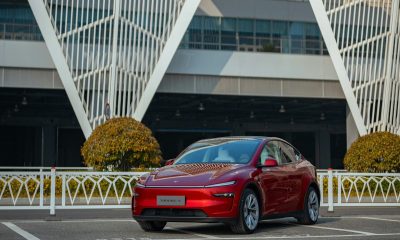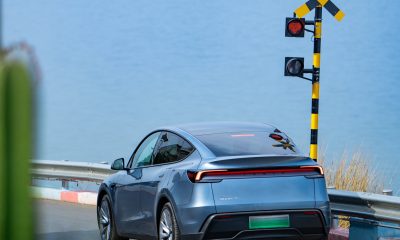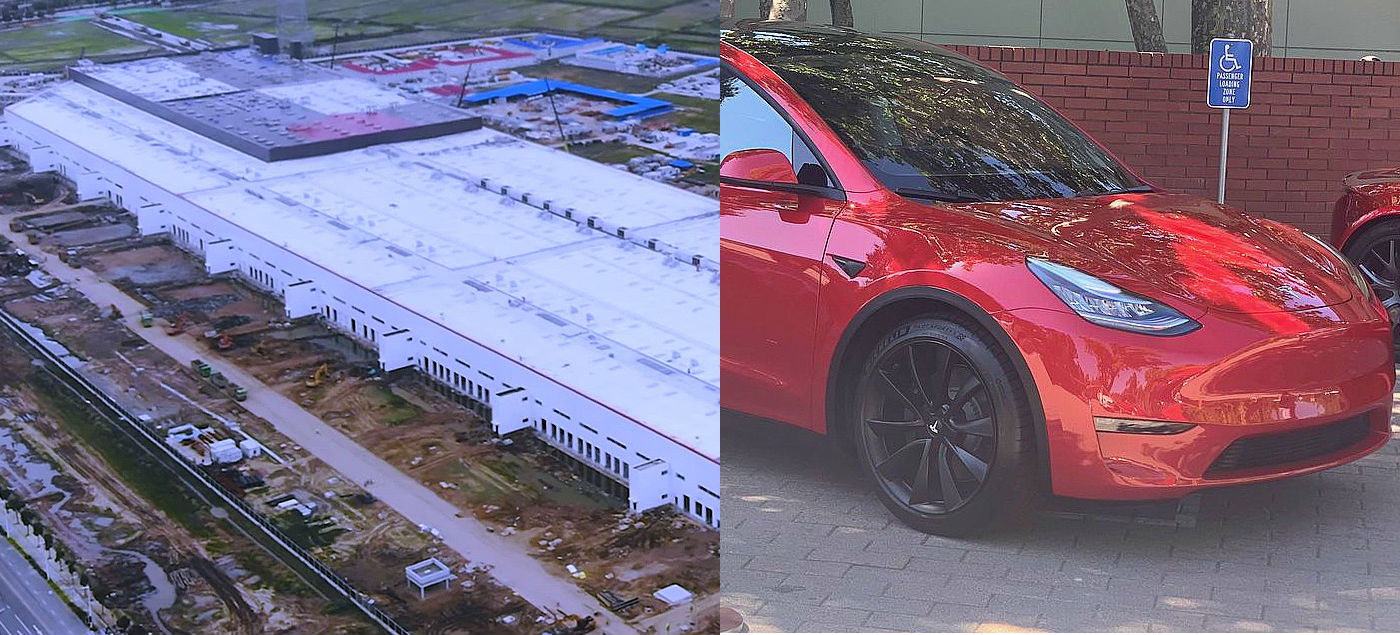

News
The Model Y and Gigafactory 3 heralds a faster, more profitable Tesla
Tesla’s second-quarter report and its succeeding earnings call provided updates on what could very well be two of the electric car maker’s most pertinent projects to date: the Model Y ramp and Gigafactory 3 in Shanghai, China. Based on Tesla’s recent reports, it appears that both initiatives are moving along at an impressive pace, perhaps even faster than initially expected.
Model Y
When Elon Musk unveiled the Model Y last March, he provided a rough timeline for the upcoming vehicle. During his presentation, Musk mentioned that the all-electric midsize SUV would start deliveries starting Fall 2020 for the Long Range, Dual Motor AWD, and Performance versions, and Spring 2021 for the Standard variant. This was quite conservative, considering that Musk has a reputation for setting extremely aggressive targets for the production of the company’s vehicles.
Since then, several reports have emerged which hinted at Model Y production being far less volatile and challenging than the Model 3’s manufacturing ramp, a task so difficult that Elon Musk candidly called the period as “production hell.” In the Q2 Update Letter, Tesla confirmed that preparations for Model Y production have begun in the Fremont factory. The company also mentioned that due to the overlap in the components of the Model Y and the Model 3, the company was able to “leverage existing manufacturing designs in the development of the Model Y production facilities.” This bodes well for the midsize SUV, considering that Tesla had rolled out several improvements to Model 3 production process over the years.
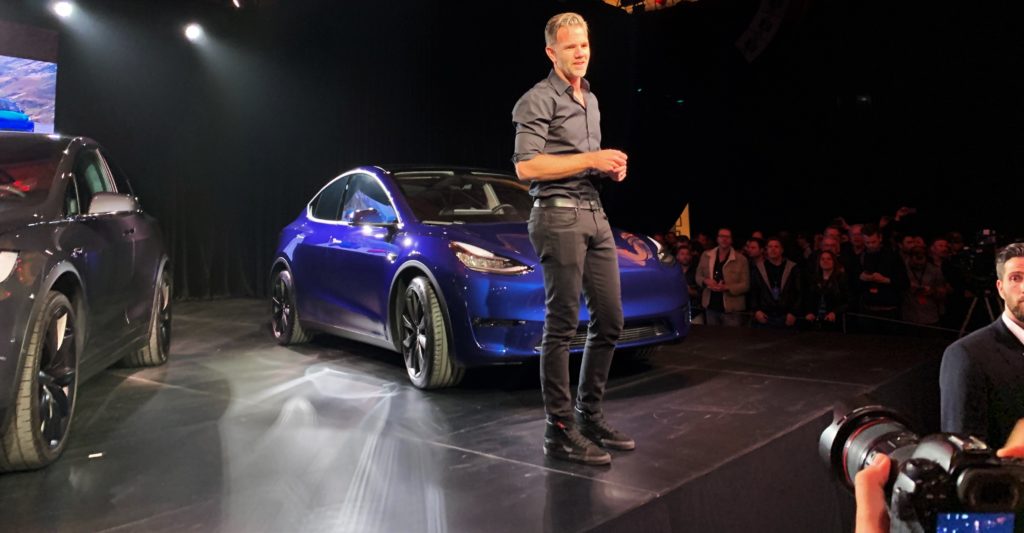
Several other hints have also emerged suggesting that Tesla will be ramping the Model Y with its best technologies available. Recent patent applications, for example, have revealed that Tesla is working on a new wiring architecture that will reduce the wires used in the Model Y to just 100 m per vehicle, a significant reduction from the 1.5 km currently being used for the Model 3. Another patent has also emerged showing the design for a mammoth casting machine, which was hinted at by Elon Musk during an appearance at the Ride the Lightning podcast last month. “When we get the big casting machine, it’ll go from 70 parts to 1 with a significant reduction in capital expenditure on all the robots to put those parts together,” Musk said.
Considering all the innovation that is being implemented for the Model Y, it appears that Tesla is doing all it can to ensure that the vehicle does not encounter delays with its rollout. In fact, with Fremont already being prepared for the Model Y, and with giant casting machines being designed specifically for the vehicle, it almost seems like Tesla is trying to start the manufacturing of the SUV earlier than expected. There’s a long time between today and Fall 2020, and that seems to be more than enough to work out the manufacturing of a vehicle that is, in essence, a taller, more spacious Model 3.
Gigafactory 3
Over in China, another understated Tesla project is taking shape. When Elon Musk attended Gigafactory 3’s groundbreaking ceremony back in January, he stated that initial production of the Model 3 in the facility would begin by the end of the year. This target timeframe was met with disdain and skepticism from critics, many of whom have noted that no car factory has ever been built in the speed that Musk wanted. Six months later, Gigafactory 3’s general assembly building is practically complete, and its interior is already being tooled. Footage from drone flyovers showed the rise of the factory, and images from Tesla’s Q2 Update Letter showed that some sections of the facility already have robots installed in them.
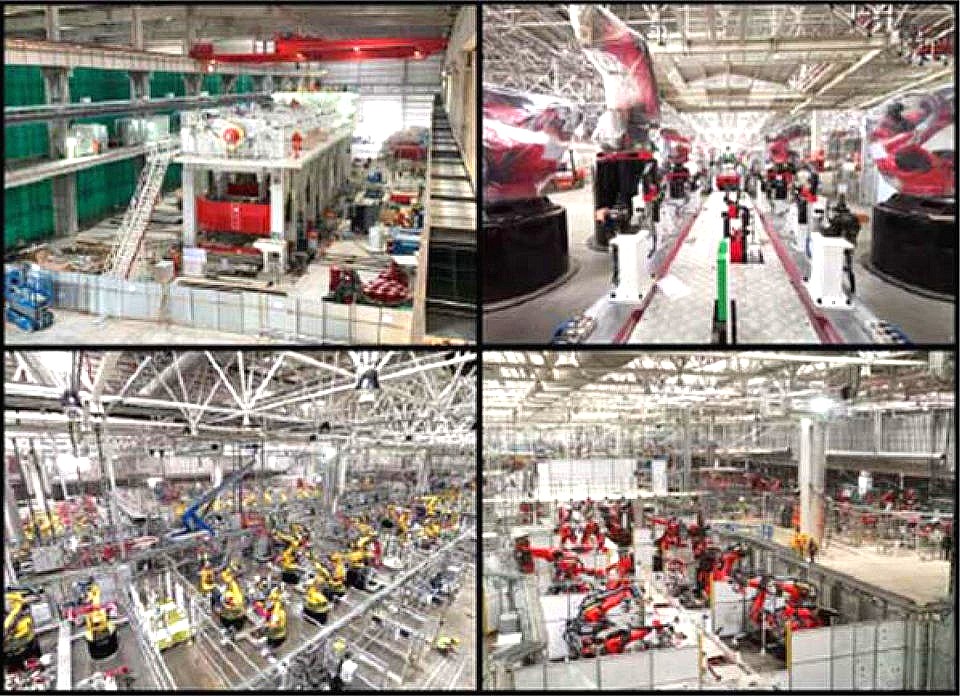
Quite interestingly, it is not Elon Musk that is providing ambitious timeframes for Gigafactory 3 anymore. Instead, it is Chinese government officials. Local reports, for example, have suggested that China is looking to start initial Model 3 production as early as September, with the facility ramping to an output of 150,000 vehicles per year early next year. Compared to Wall Street’s estimates, which currently suggest that Gigafactory 3 will produce around 35,000 to 40,000 vehicles in 2020, China’s goals for the facility are far more optimistic.
Gigafactory 3 has pretty much exceeded expectations since work in the facility entered overdrive. Just like the Model Y ramp, the key to Gigafactory 3 lies in the company’s innovations with Model 3 production. Tesla mentioned this in its Q2 Update Letter. “Gigafactory Shanghai continues to take shape, and in Q2 we started to move machinery into the facility for the first phase of production there. This will be a simplified, more cost-effective version of our Model 3 line with capacity of 150,000 units per year – the second generation of the Model 3 production process,” Tesla wrote.
There is no doubt that 2019 is turning out to be an incredibly challenging year for Tesla. Following the first quarter, which saw lower-than-expected vehicle deliveries, Tesla set new delivery records in the second quarter, only to end once more at a loss. Yet, together with this, the company also ended the quarter in more stable footing, as shown by its $5 billion in cash, the largest in its history. This was recently addressed by Baird analyst Ben Kallo, who noted that “back to the cash flow they generated during the quarter, there’s a couple of hundred million dollars, so this idea that they don’t make money is completely wrong, and the headline needs to change. There’s $5 billion in the balance sheet. They’re not going out of business.” Ultimately, the Model Y and Gigafactory 3 seem to be two projects that are heralding a new era for Tesla: one that is more mature, precise, and poised to disrupt at a scale that’s never seen before.
Elon Musk
Tesla reveals it is using AI to make factories more sustainable: here’s how
Tesla is using AI in its Gigafactory Nevada factory to improve HVAC efficiency.

Tesla has revealed in its Extended Impact Report for 2024 that it is using Artificial Intelligence (AI) to enable its factories to be more sustainable. One example it used was its achievement of managing “the majority of the HVAC infrastructure at Gigafactory Nevada is now AI-controlled” last year.
In a commitment to becoming more efficient and making its production as eco-friendly as possible, Tesla has been working for years to find solutions to reduce energy consumption in its factories.
For example, in 2023, Tesla implemented optimization controls in the plastics and paint shops located at Gigafactory Texas, which increased the efficiency of natural gas consumption. Tesla plans to phase out natural gas use across its factories eventually, but for now, it prioritizes work to reduce emissions from that energy source specifically.
It also uses Hygrometric Control Logic for Air Handling Units at Giafactory Berlin, resulting in 17,000 MWh in energy savings each year. At Gigafactory Nevada, Tesla saves 9.5 GWh of energy through the use of N-Methylpyrrolidone refineries when extracting critical raw material.
Perhaps the most interesting way Tesla is conserving energy is through the use of AI at Gigafactory Nevada, as it describes its use of AI to reduce energy demand:
“In 2023, AI Control for HVAC was expanded from Nevada and Texas to now include our Berlin-Brandenburg and Fremont factories. AI Control policy enables HVAC systems within each factory to work together to process sensor data, model factory dynamics, and apply control actions that safely minimize the energy required to support production. In 2024, this system achieved two milestones: the majority of HVAC infrastructure at Gigafactory Nevada is now AI-controlled, reducing fan and thermal energy demand; and the AI algorithm was extended to manage entire chiller plants, creating a closed-loop control system that optimizes both chilled water consumption and the energy required for its generation, all while maintaining factory conditions.”
Tesla utilizes AI Control “primarily on systems that heat or cool critical factory production spaces and equipment.” AI Control communicates with the preexisting standard control logic of each system, and any issues can be resolved by quickly reverting back to standard control. There were none in 2024.
Tesla says that it is utilizing AI to drive impact at its factories, and it has proven to be a valuable tool in reducing energy consumption at one of its facilities.
Elon Musk
Tesla analysts believe Musk and Trump feud will pass
Tesla CEO Elon Musk and U.S. President Donald Trump’s feud shall pass, several bulls say.

Tesla analysts are breaking down the current feud between CEO Elon Musk and U.S. President Donald Trump, as the two continue to disagree on the “Big Beautiful Bill” and its impact on the country’s national debt.
Musk, who headed the Department of Government Efficiency (DOGE) under the Trump Administration, left his post in May. Soon thereafter, he and President Trump entered a very public and verbal disagreement, where things turned sour. They reconciled to an extent, and things seemed to be in the past.
However, the second disagreement between the two started on Monday, as Musk continued to push back on the “Big Beautiful Bill” that the Trump administration is attempting to sign into law. It would, by Musk’s estimation, increase spending and reverse the work DOGE did to trim the deficit.
Every member of Congress who campaigned on reducing government spending and then immediately voted for the biggest debt increase in history should hang their head in shame!
And they will lose their primary next year if it is the last thing I do on this Earth.
— Elon Musk (@elonmusk) June 30, 2025
President Trump has hinted that DOGE could be “the monster” that “eats Elon,” threatening to end the subsidies that SpaceX and Tesla receive. Musk has not been opposed to ending government subsidies for companies, including his own, as long as they are all abolished.
How Tesla could benefit from the ‘Big Beautiful Bill’ that axes EV subsidies
Despite this contentious back-and-forth between the two, analysts are sharing their opinions now, and a few of the more bullish Tesla observers are convinced that this feud will pass, Trump and Musk will resolve their differences as they have before, and things will return to normal.
ARK Invest’s Cathie Wood said this morning that the feud between Musk and Trump is another example of “this too shall pass:”
BREAKING: CATHIE WOOD SAYS — ELON AND TRUMP FEUD “WILL PASS” 👀 $TSLA
She remains bullish ! pic.twitter.com/w5rW2gfCkx
— TheSonOfWalkley (@TheSonOfWalkley) July 1, 2025
Additionally, Wedbush’s Dan Ives, in a note to investors this morning, said that the situation “will settle:”
“We believe this situation will settle and at the end of the day Musk needs Trump and Trump needs Musk given the AI Arms Race going on between the US and China. The jabs between Musk and Trump will continue as the Budget rolls through Congress but Tesla investors want Musk to focus on driving Tesla and stop this political angle…which has turned into a life of its own in a roller coaster ride since the November elections.”
Tesla shares are down about 5 percent at 3:10 p.m. on the East Coast.
Elon Musk
Tesla scrambles after Musk sidekick exit, CEO takes over sales
Tesla CEO Elon Musk is reportedly overseeing sales in North America and Europe, Bloomberg reports.

Tesla scrambled its executives around following the exit of CEO Elon Musk’s sidekick last week, Omead Afshar. Afshar was relieved of his duties as Head of Sales for both North America and Europe.
Bloomberg is reporting that Musk is now overseeing both regions for sales, according to sources familiar with the matter. Afshar left the company last week, likely due to slow sales in both markets, ending a seven-year term with the electric automaker.
Tesla’s Omead Afshar, known as Elon Musk’s right-hand man, leaves company: reports
Afshar was promoted to the role late last year as Musk was becoming more involved in the road to the White House with President Donald Trump.
Afshar, whose LinkedIn account stated he was working within the “Office of the CEO,” was known as Musk’s right-hand man for years.
Additionally, Tom Zhu, currently the Senior Vice President of Automotive at Tesla, will oversee sales in Asia, according to the report.
It is a scramble by Tesla to get the company’s proven executives over the pain points the automaker has found halfway through the year. Sales are looking to be close to the 1.8 million vehicles the company delivered in both of the past two years.
Tesla is pivoting to pay more attention to the struggling automotive sales that it has felt over the past six months. Although it is still performing well and is the best-selling EV maker by a long way, it is struggling to find growth despite redesigning its vehicles and launching new tech and improvements within them.
The company is also looking to focus more on its deployment of autonomous tech, especially as it recently launched its Robotaxi platform in Austin just over a week ago.
However, while this is the long-term catalyst for Tesla, sales still need some work, and it appears the company’s strategy is to put its biggest guns on its biggest problems.
-

 Elon Musk2 days ago
Elon Musk2 days agoTesla investors will be shocked by Jim Cramer’s latest assessment
-

 News7 days ago
News7 days agoTesla Robotaxi’s biggest challenge seems to be this one thing
-

 News2 weeks ago
News2 weeks agoTesla’s Grok integration will be more realistic with this cool feature
-

 Elon Musk2 weeks ago
Elon Musk2 weeks agoElon Musk slams Bloomberg’s shocking xAI cash burn claims
-

 News2 weeks ago
News2 weeks agoTesla China roars back with highest vehicle registrations this Q2 so far
-

 News2 weeks ago
News2 weeks agoTesla dominates Cars.com’s Made in America Index with clean sweep
-

 News2 weeks ago
News2 weeks agoTexas lawmakers urge Tesla to delay Austin robotaxi launch to September
-

 Elon Musk1 week ago
Elon Musk1 week agoFirst Look at Tesla’s Robotaxi App: features, design, and more








